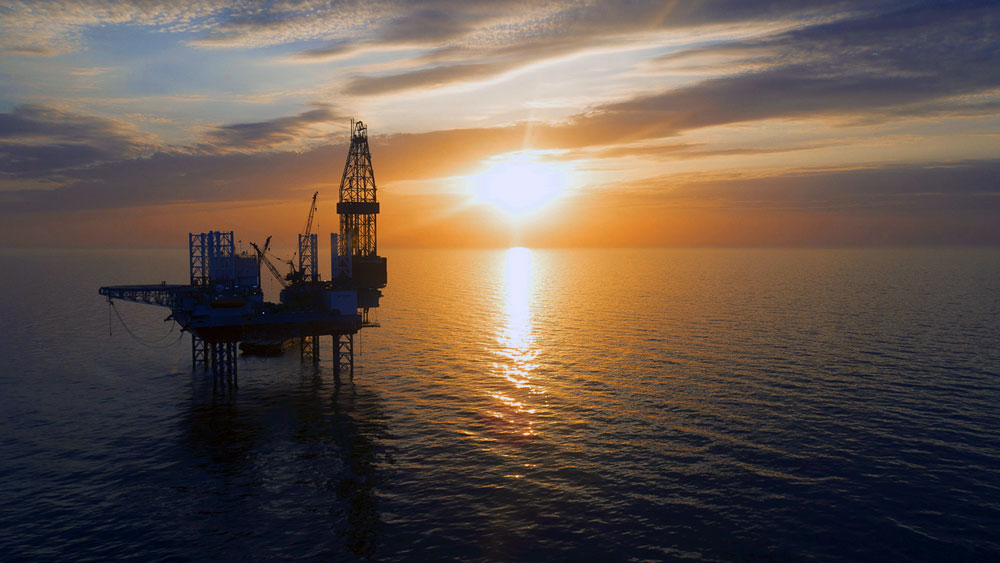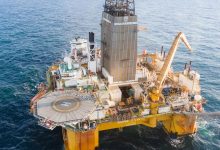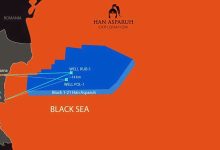Government Turns its Face to Investors
The Ministry of Energy has put up for public debate a draft law amending and supplementing the Offshore Law and the Petroleum Law, through which it aims to relax taxation for investors. The new amendments come after the form adopted last year by Parliament has dissatisfied ExxonMobil and OMV Petrom, resulting in the postponement of the final investment decision on the offshore gas block Neptun Deep in the Black Sea.
Romania has a significant potential of development of the gas sector, but tapping these resources requires substantial investments. Under these circumstances, it is necessary to ensure the adequate conditions for making the specific investments for the exploitation of gas discoveries, as well as for continuing the operations of exploration and evaluation of new hydrocarbon resources in the offshore blocks of the Black Sea, especially in the deep area, as well as for the redevelopment of existing fields and identification of new resources in shallow areas, according to the explanatory memorandum of the draft. Starting from this reality, the new draft mentions that “titleholders of petroleum agreements regarding offshore petroleum blocks in progress on the date of entry into force of this law shall benefit, during their performance, from the level of royalty, percentage rates of petroleum royalty, thresholds of gross production related to these rates and the specific fiscal regime applicable to exploration, development, exploitation and abandonment activities existing on the date of entry into force of this law.”
Proposals of the draft law
Given the need to have a competitive tax system attracting investments, the high costs and the long term for the implementation and return on investments in the offshore sector, the explanatory statement shows that it is necessary to eliminate the windfall tax for sales prices at which investors do not achieve additional profits (between RON 45.71/MWh and RON 100/MWh). In the case of windfall gains obtained from prices exceeding RON 100/MWh, the tax grid is maintained. Obtaining a normal level of cost-effectiveness expected for investor at a price of RON 100/MWh substantiates the introduction of the windfall tax starting with this threshold, while prices lower than this level do not generate additional profits.
It is necessary to eliminate the use of the reference price to determine the basis for the calculation of the windfall tax, in order to put the Offshore Law in line with the principles of taxation in Romania provided for in the Tax Code, and with the international practice regarding the determination of upstream taxes based on prices achieved. Moreover, it is necessary to mention the principles for determining the reference price in the primary legislation in order to ensure the stability and predictability of the legislative environment.
It is necessary to increase the maximum level for the deduction of investments in the upstream segment to determine the offshore windfall tax, from 30% to 60%, in order to maintain the competitiveness of the offshore sector in Romania and attract investments, given the high costs and risks and, respectively, the long term of offshore investments in the Black Sea.
It is necessary to eliminate the limitation of deduction of investments for the calculation of the corporate tax, taking into account that this tax has a general nature and all activity sectors must be treated uniformly, in accordance with the provisions of the Tax Code. Thus, discrimination to which offshore operators are subjected compared to the other economic operators is removed, as the former owe a corporate tax at a tax base artificially increased from which the expenses with the amortization of all investments made by offshore operators are not deducted.
In order to allow the practical implementation of the deduction at the calculation of the offshore windfall tax of the investment value in the upstream segment, a legislative clarification and possibly the issue of an order are required in order to clarify the application of article 19, especially regarding para. 9 and 10. The National Agency for Mineral Resources (NAMR) does not have in its attributions the approval of all offshore investments made by titleholders (e.g. technological installations/facilities for treatment, processing, transmission; other investments such as various infrastructures, e.g. offshore rigs etc.), verification of the book value of investments being within the competence of the National Agency for Fiscal Administration.
The corporate tax and the offshore windfall tax are two different taxes and therefore it is necessary that the tax base be determined adequately for both taxes. Given the existence of two different taxes, each with own rules of determination, it is not justified to affect a right of deduction established by general rules applicable to the corporate tax, by the similar deduction applicable to the offshore windfall tax, according to the relevant international practice.
It is necessary to eliminate the obligations to trade on the centralized markets in Romania in the medium and long term, in order to ensure the marketplace for natural gas from offshore blocks and, consequently, the revenues necessary for a return on the major investments involved by such projects in accordance with the international practice in the field of natural resources. Moreover, the right to freely dispose of the extracted oil and gas quantities, provided by the petroleum agreements and by Petroleum Law as a right of any titleholder of petroleum agreement, was considered by investors as an essential element of the concession which they considered upon conclusion of the petroleum agreement, respectively at the time of making investments in Romania.
The explanatory statement shows that Romania’s gas supply security depends, in the long run, on the development of domestic resources, and the greatest contribution can be brought by Black Sea exploitation. Another solid argument for the development of the sector is that natural gas is the cleanest among fossil fuels, with carbon emissions per energy unit by 40% lower than those of coal, as well as considerably lower emissions of air pollutants.
Projects on the identification and capitalization on hydrocarbon resources in the Romanian sector of the Black Sea require both keeping the current investors and attracting new investors with the technical expertise and capabilities necessary to make massive long-term investments, with a high risk, which also involve the use of performing technologies.
Long-term investments require a coherent and predictable system of laws, policies and regulations allowing investors to make a rigorous and efficient planning of investment programs. So far significant investments have been made in the offshore sector in Romania (over the past 15 years, in the offshore sector approximately USD 2.5bn have been invested in the exploration activities and over USD 1bn in activities of development and redevelopment for the existing fields), starting from the assumption of existence of a stable legislative climate for the entire duration of the petroleum agreements. The stability of taxes and royalties is essential to ensure investors’ trust in order to decide to move to the development phase.
The development of a competitive and stable legislative framework may determine capitalization for the following decades on a substantial potential of natural resources, with a significant economic impact on the Romanian economy by creating well-paid jobs, bringing substantial contributions to the state budget, eliminating the risks of energy security and the possibility to acquire a regional position of influence in the energy sector.
Offshore projects in the Romanian Black Sea sector have a profile of specific investment risk, in conditions in which: offshore operations involve high risks associated with exploration and exploitation activities; geological and technical uncertainties assumed by investors for the exploration phases are significant; there is no upstream offshore infrastructure; the lifespan of offshore projects is much higher compared to other investment projects, requiring more than ten years from the confirmation of discoveries until the production phase.
Tax rates
The offshore windfall tax will be calculated by applying one or several calculation percentages, as the case may be, on windfall gains obtained from the sale of natural gas extracted from offshore blocks, as they are determined according to Annex No. 2 to the draft, tax from which the value of investments in the upstream segment is deducted. The tax rates are calculated based on gas sales prices applied by titleholders of petroleum agreements regarding offshore petroleum blocks based on the price grid below, adjusted annually as of January 1, 2020 with the annual index of consumer prices, as follows:
- a) 30% of the windfall gains obtained from prices higher than RON 100/MWh and lower than or equal to RON 115/MWh;
- b) 35% of the windfall gains obtained from prices higher than RON 115/MWh and lower than or equal to RON 130/MWh;
- c) 40% of the windfall gains obtained from prices higher than RON 130/MWh and lower than or equal to RON 145/MWh;
- d) 50% of the windfall gains obtained from prices higher than RON 145/MWh and lower than or equal to RON 160/MWh;
- e) 55% of the windfall gains obtained from prices higher than RON 160/MWh and lower than or equal to RON 175/MWh;
- f) 60% of the windfall gains obtained from prices higher than RON 175/MWh and lower than or equal to RON 190/MWh;
- g) 70% of the windfall gains obtained from prices exceeding RON 190/MWh.
Offshore windfall tax
Depending on the weighted average price of natural gas sold from own domestic production from offshore blocks, hereinafter referred to as PMPC, the draft mentions that the following calculation formulas will be applied:
- If PMPC is between RON 100/MWh and RON 115/MWh inclusively, adjusted with IPC, as appropriate, the total offshore windfall tax owed is calculated as follows:
IVST = ISO – VID
ISO = CI x VS
VS = (PMPC – PB) x VGC
VID = min (VI, 0.6 x ISO)
IVST – the total offshore windfall tax owed;
ISO – the offshore windfall tax calculated at the windfall gains from the sale of natural gas at PMPC prices between RON 100/MWh and RON 115/MWh inclusively, adjusted with IPC, as the case may be;
CI – the tax rate applied to windfall gains from the sale of natural gas [30% – according to Article 19(3) (a)], applicable following PMPC prices between RON 100/MWh and RON 115/MWh inclusively, adjusted annually with the IPC rate starting with January 1, 2020;
VS – windfall gains from offshore blocks, calculated from the sale of natural gas, with PMPC prices between RON 100/MWh and RON 115/MWh inclusively;
PMPC – the weighted average price of natural gas sold from own domestic production from offshore blocks;
PB – the minimum base price of the corresponding calculation range, for PMPC prices between RON 100/MWh and RON 115/MWh inclusively, is RON 100/MWh, adjusted annually with the IPC rate as of January 1, 2020;
VGC – the gas volumes from domestic production sold from offshore blocks;
IPC – the annual consumer price index in the previous year published by the Romanian National Institute of Statistics;
VID – the value of deductible upstream investments;
VI – the total value of upstream investments as they are provided in Article 19 (9), which is diminished monthly with the deducted VID value.
- If PMPC exceeds RON 115/MWh, adjusted with IPC, as appropriate, the total offshore windfall tax owed is calculated as follows:
IVST = ISO – VID
ISO = CI x VS
VS = (PMPC – PB) x VGC
VID = min (VI, 0.6 x ISO)
ISO – the sum of offshore windfall taxes, calculated for each price range according to Article 19(3)(a)-(g), respectively:
ISO = ISO1 + ISO2 +…+ ISOi
ISOi is calculated according to the calculation formula from point 2, where the corresponding terms have the following meanings:
CI – the tax rate applied to windfall gains from the sale of natural gas, for each corresponding price range, according to Article 19(3)(a)-(g) of the draft law;
PB – the minimum base price of the corresponding calculation range, adjusted annually as of January 1, 2020 with IPC;
VS – the windfall gains from offshore blocks, calculated for each corresponding price range.
Example of calculation
For the sale of a VGC volume of 1 MWh at a sales price of RON 120/MWh, the total offshore windfall tax owed is calculated applying the previous formulas as follows:
IVST = ISO – VID = 6.25 – 3.75 = RON 2.5
ISO = CI1 x VS1 + CI2 x VS2 = 0.30 x 15 + 0.35 x 5 = RON 6.25
VID = 0.6 x ISO = 0.6 x 6.25 = RON 3.75
CI1 = 0.3 – the tax rate (30%) applied to offshore windfall gains from the sale of natural gas applicable for charging prices between RON 100/MWh and RON 115/MWh inclusively, according to Article 19 (3)(a), adjusted annually with the IPC rate as of January 1, 2020;
CI2 = 0.35 – the tax rate (35%) applied to offshore windfall gains from the sale of natural gas applicable for charging prices between RON 115/MWh and RON 130/MWh inclusively, according to Article 19 (3)(b), adjusted annually with the IPC rate as of January 1, 2020;
VS1 = (115 – 100) x 1 = RON 15 the windfall gain from offshore blocks, calculated as difference between RON 115/MWh and RON 100/MWh, adjusted annually with the IPC rate as of January 1, 2020;
VS2 = (120 – 115) x 1 = RON 5 the windfall gain from offshore blocks, calculated as difference between PMPC (RON 120/MWh in the given example) and RON 115/MWh (the minimum base price of the range), adjusted annually with the IPC rate as of January 1, 2020.







